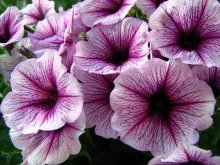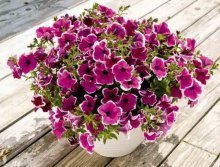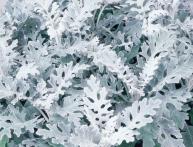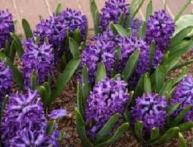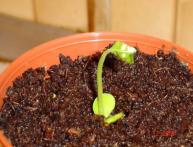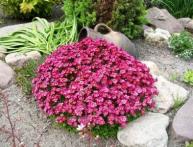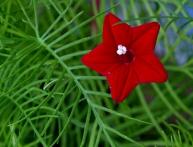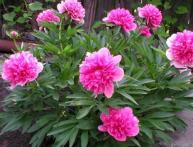Finding out when to sow petunias for seedlings
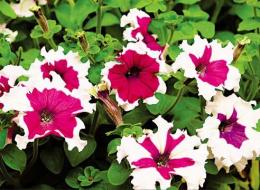
Petunia comes in many shades: from snow-white to jet black, from pink to yellowish-green, from blue to purple. It is also different in the shape of the flowers, it can be double and with flowers that have a double edge. In size, flowers can be either miniature or very large, in color - one-color, two-color and fancy.
Content:
- Varieties of petunias
- When to sow petunia seeds for seedlings
- Planting seeds for seedlings in peat tablets
Varieties of petunias
Petunia happens:
- hanging - shoots grow downwards, they are planted in hanging containers, varieties: “Wave of Luck”, “Lilac Surf”, “Pearl Surf” with very large flowers
- bush - varieties: “Storm” with lilac small flowers, “Ultra”; "Dream", low-growing plants with flowers of various colors; "Limbo", "Triumph" with flowers up to 16 cm in diameter
- cascade - shoots grow up, down and to the sides; varieties: “Ramblin”, flowers from peach to purple shades; "Cherry"; “Rose” and “Typhoon”, the lashes of this variety grow up to 1.5 m
- Calibrachoa - their stem bushes and becomes woody, and the flowers are very small, the “Million Bells” variety, whose leaves are almost invisible due to the abundance of small flowers
- Floribunda - near petunia double flowers, it is very resistant to bad weather conditions, the Sonya Orchid variety, whose flowers have contrasting veins
When to sow petunia seeds for seedlings
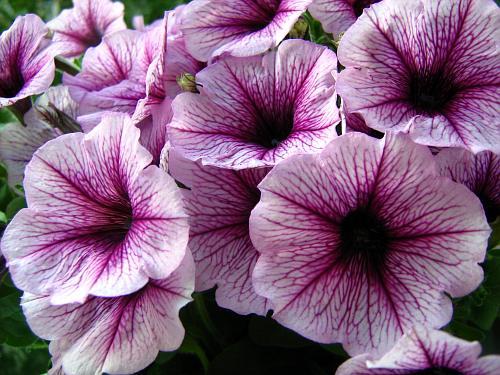
To obtain seedlings in the Central European part of Russia, petunia seeds are sown at the very end of February.Then the plants will bloom sometime in late spring. You can also sow at the end of January, but the seedlings are illuminated with lamps.
Sowing seeds for seedlings in boxes
In autumn, mix the sand well, garden soil, humus in a ratio of 2:1:1. Lay newspapers at the bottom of wooden boxes and pour the mixture there. The soil is left outside, then it will freeze. In January, the boxes are brought into the apartment. They are waiting for the ground to thaw.
There are 2 types of seeds: regular and with a shell. The advantages of coated seeds are that they protect them from diseases and damage; such seeds are much easier to sow. But pure seeds are much cheaper.
Petunia seeds need light, loose, nutritious soil; it must be thoroughly watered one day before sowing.
Sowing with regular seeds
Since they are very small in size, you can mix them with sand in a ratio of 1.5 to distribute them evenly over the surface of the earth. The seeds are poured directly onto the surface of the soil, they are not buried. They are sown rarely so that the sprouted plants do not interfere with each other.
Sowing with coated seeds
It is necessary to make small furrows in the ground, water them thoroughly and place strips cut from paper napkins into them. Seeds with a shell are carefully placed on wet strips. They also do not need to be covered with soil.
The soil needs to be watered through a very fine strainer with a 0.1% previcur solution to protect the sprouts from fungus. Then the ground is sprayed with water using a spray bottle and covered with glass or film. The room temperature should be 20°C.
After a week, shoots appear.The top layer of soil in a box with crops should not be too dry, but not too wet, because of this it is necessary to look at the seedlings twice a day, spray them every day, and then turn the glass over.
When watering, water is usually poured into a tray. To prevent the seedlings from getting sick black leg, it is necessary to spray the seedlings from time to time with a pale pink solution of potassium permanganate, remove the glass daily to ventilate the boxes, then turn the glass over and wipe it. When the first true leaf emerges, you can remove the glass.
Since the seeds are sown rarely, picking is carried out when there are 4 true leaves. First you need to water the soil well, then pry the seedlings with a stick, take them by the leaf and carefully remove them from the ground, making sure that the soil does not fall off the roots of the plant. They are replanted carefully, slightly lifting the cotyledons so as not to cover the petunia's growth point with soil.
You can now feed the plants. But if they are very elongated, then there is no need to use fertilizers with nitrogen. Seedlings are planted in open ground after there is no frost. Petunia has highly branched roots, but they grow on the surface of the ground, because of this they will not be damaged during transplantation.
Seedlings cannot be planted on sunny days; they can be planted in the evening, first thoroughly watering the pots. Multicolor petunia is planted at a distance of 20 cm, and large-flowered petunia is planted at a distance of 25 cm. As soon as the seedlings are planted in their permanent place, they are thoroughly watered, and the ground around is mulched with humus or peat. When mulching the soil, moisture in the ground is retained longer, and plants are protected from frost.
Petunia likes to grow on loamy, sandy, fertile land. But she cannot withstand the addition of fresh manure; because of it, she may develop fungal diseases.
It is recommended to replant the plant while it is in flower and it will bloom in summer and autumn. At the beginning of May, seedlings can be planted on the balcony in flowerpots or flower beds.
Planting seeds for seedlings in peat tablets
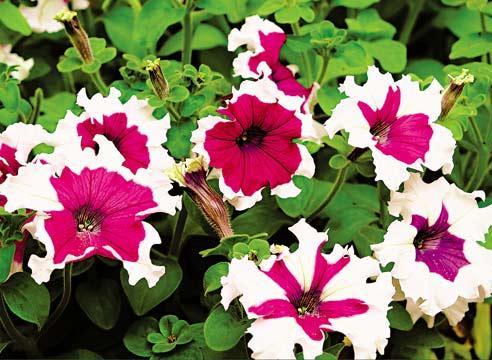
You need to take a shallow plate or a jar lid and cover the bottom with a wet napkin or toilet paper. Scatter granulated seeds or plain seeds on top. Spray them with water. Cover with transparent dishes or film. You can put the container in a plastic zipper bag. Place in a warm place and constantly moisten them. Ventilate from time to time.
If the seeds do not germinate for a long time, place the container with the seeds in a ziplock bag. Breathe into it, zip up the bag, and put it in a warm place. This is repeated in the morning for 3-5 days. Then the seeds will begin to germinate because the carbon dioxide that you exhaled into the plastic bag acts on them, stimulating their germination. Don't forget to water.
After 2-4 days, green cotyledons begin to appear; the sprouts need to be replanted. Place peat tablets in some container, pour boiling water over them, wait 10 minutes.
Take a toothpick, very carefully pick up the sprout and transfer it to the tablet. Using a toothpick, sprinkle some soil on top.
Attach a label to the container with the name of the variety.
Light the plants with a regular lamp. It should rise 10 cm above the plant.
Petunia grows in tablets for 2-3 weeks. First, cover the container in which the tablets are located, but it is necessary to open the container, ventilate and water it.
After 3-4 weeks you need to pick up the petunia. The tablet with the sprout should be placed in a peat pot.Also light the plants.
When the first true leaf appears, seedlings are fed. Petunias need to grow both green leaves and roots, so alternate foliar food with root growth food. For example, once a week for leaves use - Kemira Lux, for 2 weeks for roots - Potassium Mono-phosphate, for 3 weeks for leaves - Uniflor Rost, for 4 weeks for roots - Uniflor Micro.
Young seedlings require complex fertilizers with a high nitrogen content. When the plant grows, in order for it to bloom profusely, fertilizers containing potassium and phosphorus are needed.
Before transplanting petunia into the ground at the dacha or on the balcony, you need to tear off its buds in order to prevent it from blooming, since the growth of the vines slows down greatly when flowering.
The soil for planting on the balcony is made as follows. Take parts of: sand, humus, turf soil, high peat in the ratio 1:2:2:2.
For example, 2.5 kg of sand, 5 kg of soil, 5 kg of humus, 5 kg of peat, 2 liters of perlite. When perlite is added to the ground, the weight of the box on the balcony is greatly reduced. In addition, such soil retains moisture well and is constantly loose.
Petunia is unpretentious and easy to replant. It can withstand various climate conditions - from cool to hot with temperatures of 400C.
Video about planting petunias:
Interesting information about the vegetable garden

